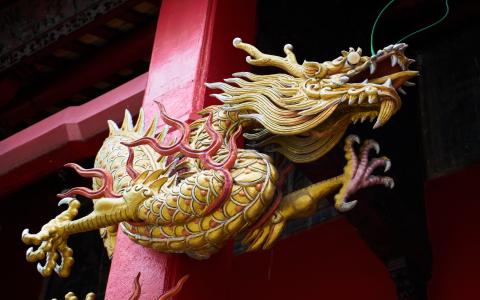
(Bloomberg) - A brief cash squeeze rattled China’s money markets earlier this week, illustrating how the nation’s tightly-managed financial system is under strain from the government’s deluge of debt sales.
Interest rates on an overnight interbank loan soared to as high as 50% in isolated transactions for non-bank institutions on Tuesday, worsening a usually mild month-end funding crunch. A confluence of factors, from capital requirements for banks to tax payments and large government bond sales, were behind the surge in demand.
A person close to the People’s Bank of China told Bloomberg News on Tuesday that borrowing costs will likely retreat to normal levels as liquidity remains abundant. Interbank rates dropped sharply the following day and the PBOC even drained cash from markets, suggesting it views Tuesday’s chaos as a one-off disruption.
What happened:
1. Why did borrowing costs surge for non-bank institutions this time?
Money market rates climbed in late October as banks came under pressure to meet regulatory requirements, companies faced tax payments and China’s central and local governments sold a record amount of bonds. A bank trader said at that time that cash demand was too high for large banks, the main providers of funding, to satisfy.
Liquidity conditions became even tighter on Tuesday. Non-bank institutions, from brokerages to asset managers, which are known for aggressively using interbank loans to bet on bonds, were likely caught off guard.
2. What are overnight repurchase agreements and what are they used for in China?
Overnight repurchase agreements, or repos, are a money market loan that uses government or corporate debt as collateral. They are the most popular funding tool for leveraged bets on bonds in China.
3. Who are non-bank institutions in China and where do they get funding?
Non-bank institutions refer to all financial firms other than commercial lenders. They include securities firms, insurance companies, fund houses, and trust firms. They can access short-term funding either in the country’s vast interbank market or on its two stock exchanges.
4. Why do they tend to suffer more from tighter liquidity?
It’s usually much harder for non-bank borrowers to secure funding in the interbank market because their asset holdings mainly comprise higher-yielding but lower-rated corporate bonds. The weaker appetite for such notes as collateral for loans often leads to higher borrowing costs.
When there’s a seasonal surge in cash demand, such as at the end of a quarter or month, the pool of funds dominated by commercial lenders shrinks further for their non-bank counterparts.
5. How does the PBOC usually respond to a cash squeeze?
China’s central bank has in the past used either liquidity injections via open market operations or window guidance to large banks, or a combination of both, to soothe frayed nerves.
State media often weigh in too. On Tuesday, national broadcaster China Central Television blamed unidentified financial institutions for disrupting the market.
China also reopened its interbank trading platform at 6:00 p.m. local time on Tuesday, about an hour after its normal closing time, to give market participants more time to settle transactions.
6. Will it happen again?
Analysts warn that similar, even if brief, liquidity scares may occur again in the coming months as Beijing raises 1 trillion yuan ($137 billion) via sovereign bonds to fund more stimulus. Provincial governments are also gearing up for another 1 trillion yuan refinancing program.
“As bank balance sheets get clogged up with all this government bond issuance, leveraged, non-bank investment companies will likely continue getting squeezed,” Adam Wolfe, an economist at Absolute Strategy Research, wrote in a note. “So we continue to expect more liquidity support from the PBOC, including a cut to banks’ required reserve ratio.”
By Bloomberg News
With assistance from Yujing Liu



